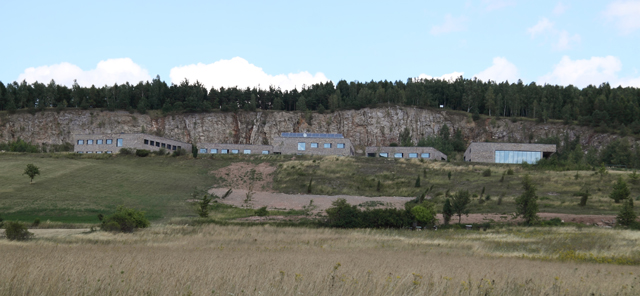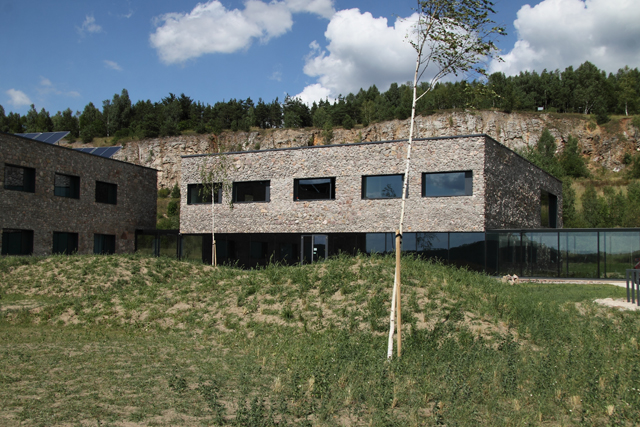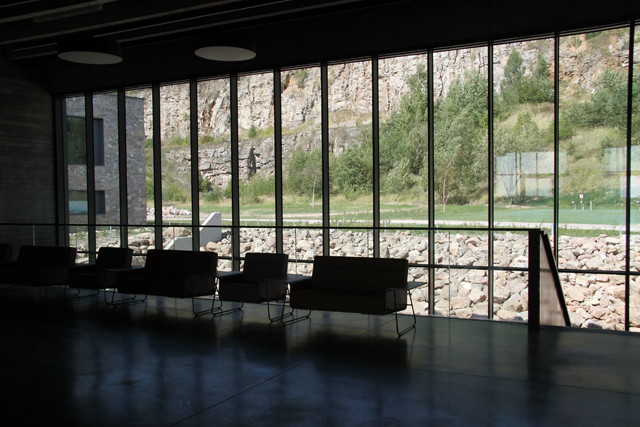EUROPEAN CENTRE FOR GEOLOGICAL EDUCATION

Finding an employee to work in our industry with specialist knowledge is not easy. One of the specialties in demand is geology.
And while most quarry practitioners will readily point to mines as the market segment needing geologists, it is not just mines that need them. If geologists worked in our companies, there would probably be fewer misunderstandings related to the installation of unsuitable materials for specific investments and obvious mistakes in the processing of specific elements would be less frequent.
We try to keep abreast of all activities related to the training of future industry professionals. For this reason, since last autumn we have been observing the progress of the construction of the European Centre for Geological Education, which we mentioned in the previous issues of our magazine. The Centre has now been completed and the first students have started their practice there, so we are presenting it in more detail.
The founder and investor of this project is the University of Warsaw. ECEG was built with the support of EU funds on the site of an inactive quarry on Rzepka mountain near Chęciny (near Kielce) for ca. 30 million PLN (of which 26 million PLN is EU funding). However, the whole project is more expensive, as the equipment, promotion and operation of the project consumed about 4 million PLN.
The facility consists of five buildings – two of them are student buildings with double rooms and places for group work. The third building – with a club room – is intended for staff. The complex is completed with a laboratory building and a main building with an assembly hall, a canteen and a foyer where the reception desk is located. The total area of the building is 6,500 m2.

The main building is distinguished by a glass facade overlooking the wall of an old quarry. On the other side of the building, the glazed walls of the canteen provide a beautiful view of the surrounding area.
It is worth noting that the buildings blend in perfectly with their surroundings. This is the result of a few simple measures. The elevations are clad with irregular pieces of local stone and stone from Bolechowice.
Larger stones were cut during the construction works to obtain a thickness of no more than 12 cm. The facade, with a total area of 3,500 m2, is intended to show the layering of the rocks in addition to their aesthetic value. The roofs are covered with xerothermic grass. The surroundings of the buildings are also planted with thermophilous grasses. The idyllic image is completed by birch trees planted all around.
In the auditorium with a capacity of 240 people, which is the largest room in the complex, rock is used as a structural element of the walls. This solution is unique in Europe – a similar use of rocky terrain only exists in one church in Finland. However, this element of the building turned out to be extremely difficult to realise. According to geological studies, it was supposed to be solid rock, but in fact the ground turned out to be rock rubble.
In terms of facilities, the laboratory building stands out. Among other things, it has a sample preparation room that has been acoustically insulated, and a micro-computer laboratory equipped with a 60-inch television screen that provides a better picture than projectors. The teaching and seminar rooms have been designed so that they can be divided up and arranged according to current needs. All buildings are connected by a glass connector.
Outside the buildings, ponds have been created and boulders excavated during the works have been left in the grounds and serve as seats. A small playground has also been built, with an auditorium constructed using the stones excavated during the construction.

ECEG arouses interest. It is visited by many people, not only architects and interested scientists, but also people visiting the nearby castle in Chęciny.
The first students – 96 people – have already visited the ECEG together with ten members of the staff. They are all delighted with the conditions they have found. The official opening of the Centre will take place in the autumn, after the removal of minor faults which the first guests are helping to spot. The facility is magnificent. In an unusual setting, it provides excellent conditions for work and leisure. Let us hope that thanks to this, even better educated geologists will be leaving the university. And their stay in the vicinity of the stones will encourage them to specialise in fields that are in demand in the stone industry.
Source: Kurier kamieniarski
Author: Dariusz Wawrzynkiewicz | Published: 25.08.2015
